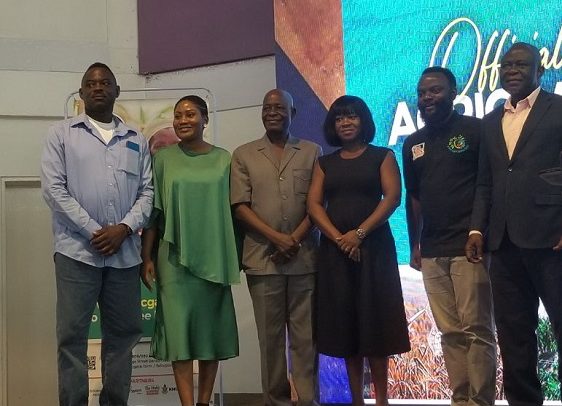
“Human are most insane spices, they destroy the nature, and worship the invisible nature” – Hubert Reeves
The galamsay problem we face now in Ghana is institutional failure; the institutions that are mandated to monitor, protect and implement environmental policies are to be blamed for all that evil and atrocity caused to the nature.
These institutions are responsible for the issuing of licenses or permits to any person, or legal entities to harvest, mine or extract the natural resources in Ghana, such permits or license are guided by strong procedures or requirements.
In any case, Environmental Impact Assessment (EIA) supposed to be a requirement for the application for any mining permits or license.
The EIA process is an interdisciplinary and multi-step procedure to ensure that
environmental considerations are included in decisions regarding projects that may
impact the environment. Simply defined, the EIA process helps to identify the possible
environmental effects of a proposed activity and how those impacts can be mitigated.
Over the past 10 years, it has become increasingly apparent that the country is facing a resource and environmental management crisis – large hectares of land, river bodies have completely been destroyed and large numbers of marine fisheries have been seriously depleted.
Forests are being harvested at unsustainable levels; acid rain and smog are problems; soil erosion and chemical contamination threaten vast areas; these mining chemicals make life hazardous for large numbers of humans and other animals species; many rivers and estuaries are polluted; and virtually every large river in Ghana is in a precarious state.
In my opinion, the cause of environmental degradation and the depletion of resources
are regulatory problem. The institutions that are mandated to protect the environment with tax payer’s money are to be blamed for the current environment crises. They were not set up to clean the rivers and reclaim the lands after they have been destroyed; their responsibility is to make sure this never happens.
The other major area of policy failure in the mining and forestry sector is in the legal
framework governing land tenure and titling, especially the mining sector.
Our laws and regulations sometimes conflict with each other or with local legislation and such laws often fail to take into account traditional or customary laws, which often have more impact on the way in which land is managed in remote areas. The uncertainty that this creates further exacerbates the common property problems referred to above.
In some cases, laws governing land tenure and titling even encourage the mining.
The first steps are establishing legal property rights over natural resources. Per
Constitution, all natural resources are the property of the Republic and are vested in the President on behalf of and in trust for the people of Ghana, according to the
Constitution.
The Ministry of Lands and Natural Resources is responsible for managing and regulating these resources. Parliament provides for the establishment of various
commissions to oversee the regulation and management of the natural resources. This
is clearly defined in the constitution. Therefore why do we find our environment is such deplorable state?
“A healthy ecology is the basis for a healthy economy.”—Claudine Schneider.
With the right rules and institutional governance structures, the natural resources will be extracted wisely and conservation goals will be met. Unfortunately, we clearly have not gotten those rules right. That is why the environment is in such dire straits which point to the widespread institutional failure we are witnessing.
Although there is an agreement that institutions are needed to solve resource problems, there is no agreement as to what institutions would do the job best. At this point, it is generally agreed that two ministries, namely Ministry of Environment and Ministry of Minerals and Natural Resources. Under these two ministries, we have these agencies (institutions), Environmental Protection Agency, Forestry Commission and Minerals Commission.
All these institutions have a big role to play in protecting, monitoring, and implementing policies to manage the environment and the natural resources.
These institutions are responsible for issuing permits and licenses for the extraction of the resources, and surely there are procedures or requirement that must be met before permit or license is granted. Such requirement include or should include “baseline studies” and “feasibility studies,” The baseline and feasibility studies will: potentially screens out environmentally unsound activities, propose modified designs or advice to reduce environmental impacts, identifies feasible alternatives, predicts significant adverse impacts, identifies mitigation measures to reduce, offset, or eliminate major impacts,
engages and informs potentially affected communities and individuals and influences decision-making and the development of terms and conditions. The report will give a
clear picture on environmental impact. The report will also include the environmental,
economic and social history of the area before the project takes off.
The requirement applies to any applicant whether large or small, it allow us to establish limiting entry schemes that could control the damage we are witnessing now. The primary cause of the destruction and inefficient and unethical mining is the absence of proper structures from the institution that has the mandate to protect us. The sad thing is that these institutions were established before the GALAMSAY or the use of heavy earth moving equipment. It did not take one month or one year to get to where we are now.
The destruction happened under the watch of these institutions that are mandated to protect us.
In any rational thinking, it is the institutions that has failed us not the timber merchant
(contractor) or the miners – the environmental governance structures did not work that is why we have some unusual understanding into the resource-management problems we currently face. The institutions have failed to protect the environment, and the reasons for those failures are not always predicted on the basis of existing policy framework.
I believe that we have adequate existing policy and legislation in place to support the implementation of various aspects of sustainable environmental management that can help us to achieve much with minimum cost.
The establishment of Task forces are not cost effective and won’t achieve the needed results we are looking for. Indeed, institutional failure can be seen as an extension of environmental failure and poor environmental practices.
Mining is here to stay therefore we should develop effective solution to the problem.
The solutions are there, we should find them. The cleaning, detoxification and decontamination of the waters is not good enough. What about the lands that are contaminated?
Above all how much is it going to cost? And who is going to pay for the cost? Can the money spent on the cleaning project be used on more important project for national development?
The typical response to environmental failure is to design and implement government policies to attempt to either regulate the failed system or create environmental legislations to protect the environment. We can have subsidies to support desirable interventions and fines or penalties to discourage bad practices. However, other policies within and outside the river bodies and forestry sector often counteract or diminish the effect of these policies.
We must stop using “dead cat” strategy. To some extent, the current debate about sustainable mining management has proven futile in the past in this respect. We need to seek constructive approach to improve an overall mining planning.
Regulation is a direct measure by which governments seek to alter the actions of the private-sector by specifying either output or quality standards that they must meet, or by instructing them to perform certain actions or forbidding them to do others. Because of the direct nature of government regulations, they are often a preferred choice for
governments that want to implement a particular policy.
Given the limited success of some of the other measures that have been attempted to encourage the implementation of sustainable forest management, it seems likely that better designed and more strictly enforced regulation will form a major part of any strategy to encourage sustainable
mining – any regulation must be compatible with other agencies with responsibility for
mining sector, strong enforcement, and the regulation must not be complex.
The existing complex web of regulation must be replaced by simpler, cost effective and efficient regulation can be measured and enforced.
Indian leader Mahatma Gandhi has an apt admonition, “Earth provides enough to satisfy every man’s needs, but not every man’s greed”.
Written by Dr. Edward Kwadwo Yeboah
The writer is an Economic Development Consultant
The post Feature: The Problem Of Galamsay Is Institutional Failure appeared first on The Ghanaian Chronicle.
Read Full Story















Facebook
Twitter
Pinterest
Instagram
Google+
YouTube
LinkedIn
RSS